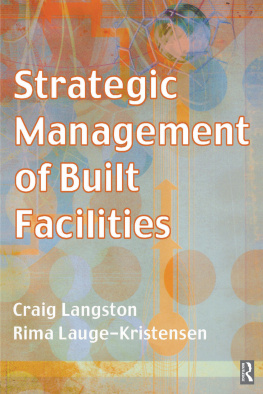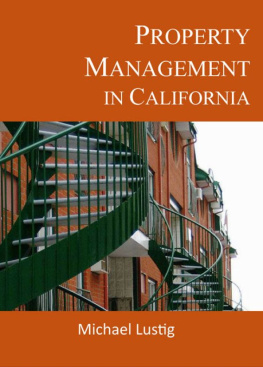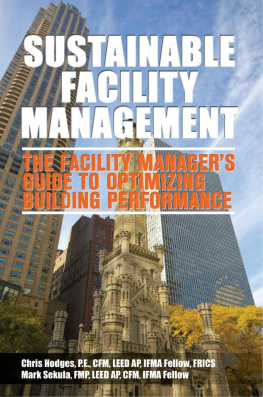All rights reserved. No part of this publication may be reproduced in any material form (including photocopying or storing in any medium by electronic means and whether or not transiently or incidentally to some other use of this publication) without the written permission of the copyright holder except in accordance with the provisions of the Copyright, Designs and Patents Act 1988 or under the terms of a licence issued by the Copyright Licensing Agency Ltd, 90 Tottenham Court Road, London, England W1P 0LP. Applications for the copyright holder's written permission to reproduce any part of this publication should be addressed to the publishers
List of contributors
Editors
Craig Langston Associate Professor in Construction Economics at the University of Technology, Sydney (UTS). Before commencing at UTS, he worked for a professional quantity surveying office in Sydney. His PhD thesis was concerned with discounting and life-cost studies. He developed two cost-planning software packages (PROPHET and LIFECOST) that are sold internationally, and is author of several books covering aspects of construction economics and facility management.
Rima Lauge-Kristensen Architect and research scholar. She holds a PhD in physics and a bachelor of arts degree in architecture, and has worked in a number of roles relating to the construction industry. She has particular expertise in the physics of building systems and emerging technologies that aim to minimize energy demand. Specialist contributions
Specialist contributions
Rick Best Senior Lecturer in Construction Economics at UTS. He has degrees in architecture and quantity surveying and has research interests in information technology, energy in buildings and low energy design strategies. Rick is undertaking research in district energy systems and the international performance of construction projects, and is the co-editor of several books on value in building.
Gerard de Valence Senior Lecturer in Construction Economics at UTS. He has an honours degree in economics from the University of Sydney. He has worked in industry as an analyst and economist. His principal areas of research interest include the measurement of project performance, economic factors related to the construction industry, and the impact of emerging technologies.
Grace Ding Lecturer in Construction Economics at UTS. She has a diploma from Hong Kong Polytechnic, a bachelor's degree from the University of Ulster and a master's degree by thesis from the University of Salford. She has practised as a quantity surveyor in Hong Kong, England and Australia. Grace is currently undertaking PhD research in the area of environmental performance measurement.
Peter Smith Senior Lecturer in Construction Economics at UTS. Prior to his current appointment he worked for a large professional quantity surveying practice and an international construction and property development company. He is currently undertaking PhD research and has an interest in consumer investment advice and property maintenance.
John Twyford Senior Lecturer in Construction Economics at UTS. He has a doctorate in judicial science and is editor of the Australian Construction Law Newsletter. He has significant industry experience in the development and administration of construction contracts and has been involved in educating students in this field for more than 20 years.
Foreword
Wes McGregor
Only the future lies ahead. The strategic imperative of all enterprises that aspire to success is to view the future as an opportunity. An opportunity to develop and then implement plans leading to sustainable comparative advantage over their competitors.
Strategic management is the means of guiding an enterprise through its actions to its chosen future. It involves determining purpose and objectives; formulating plans of action to achieve these objectives, most probably in a climate of change; implementing the actions; then evaluating the outcome against the objectives and making changes where required. Strategic management has for long been an established component of business, yet its application in the management of key resources of business - its property and related facilities services - has often been conspicuous by its absence. Why?
Ranging as it does from maintenance to security, and from cleaning to workplace planning, facilities management is more often than not perceived as a low-grade activity of no real consequence to business. Concomitant with this, facilities managers are generally perceived as having a low level of contribution to the success of the organization. Nothing could be further from the reality. The built environment for work (workspace) is rarely, if ever, neutral in its influence upon the performance of the enterprise. It either helps or it hinders. It either supports or it inhibits. It either stimulates or it demotivates.
Workspace and its facilities infrastructure are the tools at the disposal of the people in the business to enable them to achieve the enterprise's goals. The key aim of their strategic management is to add value to the organization through the effective management of the built environment. Yet the perception of business leaders is all too often that facilities and their managers are resource consumers rather than value adders. Changing this view is a major challenge faced by all facilities managers.
The performance of facilities managers impacts upon the performance of their organizations' workspace, which itself has a direct impact upon the performance of workers and hence that of the enterprise as a whole. Through their actions, facilities managers have a vital part to play in enhancing corporate performance and thereby in delivering shareholder value. Some business leaders have responded by outsourcing facilities and their management, believing that this will lead to reduced operating costs which in turn will enhance shareholder value. However, strategic management should not, indeed some would say (and I would not disagree) cannot, be outsourced. By its very nature it is the strategic vision that makes each enterprise unique.
Changing the focus of facilities managers from cost reduction and operational to tactical and strategic - i.e. forward looking and not being guided by a 'rear view mirror' approach - is at the core of the required transition. With crystal clarity, the goal to which all facilities managers should aspire is to migrate their operations from being









